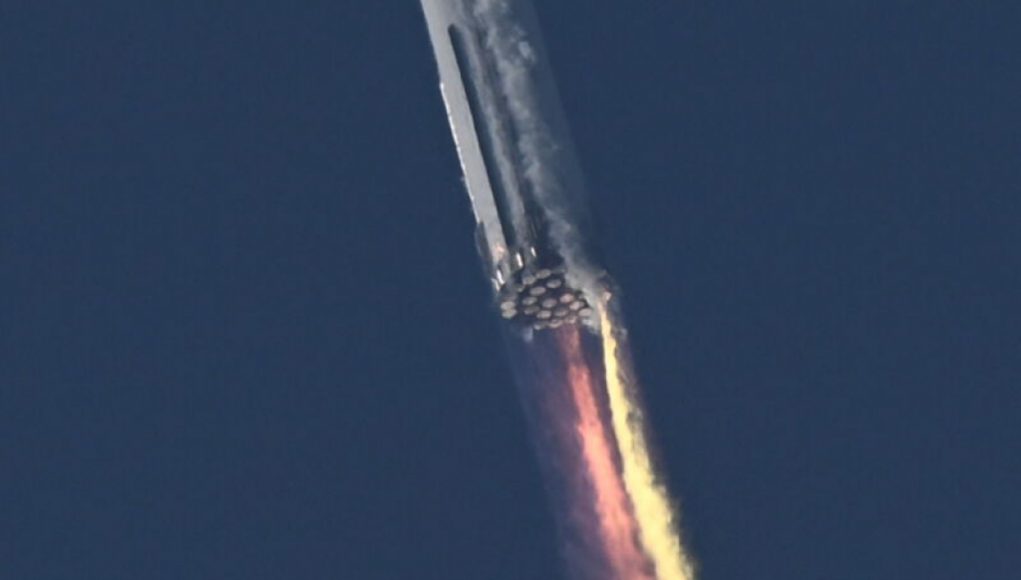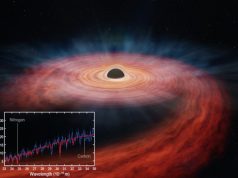Sunday update: Elon Musk, SpaceX’s founder and CEO, took to his social media platform X on Sunday to announce that the company has successfully completed 57 corrective actions required for the second integrated test flight of the Starship rocket. Musk also mentioned that six more corrective actions will be implemented for future missions. This story has been updated to include Musk’s statement.
The Federal Aviation Administration (FAA) announced on Friday that it has concluded its investigation into the issues encountered by SpaceX during its first full-scale Starship test launch in April. However, the FAA has not yet given the green light for the next Starship flight.
“The closure of the mishap investigation does not mean that Starship launches at Boca Chica will resume immediately,” stated the FAA, referring to SpaceX’s Starship launch facility at Boca Chica Beach in South Texas.
The massive 400-foot-tall Starship rocket, the largest ever built, is currently standing on its launch pad in Texas for an upcoming test flight. Pending FAA approval, this test flight could take place before the end of the month.
If all goes according to plan, the rocket’s Super Heavy booster, powered by 33 methane-fueled Raptor engines, will burn for nearly three minutes. Then, the Starship upper stage will ignite its own Raptor engines to accelerate to near-orbital velocity, enabling the vehicle to embark on a flight that covers three-quarters of the Earth’s circumference. The booster will attempt a controlled splashdown in the Gulf of Mexico, testing maneuvers for future rocket recovery and reuse.
Advertisement
However, the first test flight of the Starship did not go as planned. SpaceX recently submitted the results of its investigation into the failed test launch to the FAA. The test ended approximately four minutes after liftoff on April 20.
During the test, multiple Raptor engines on the rocket’s Super Heavy booster malfunctioned, causing the vehicle to lose control in the upper atmosphere. An autonomous self-destruct system was activated, but it took longer than expected for the rocket to disintegrate. Eventually, the rocket exploded in a ball of flame.
The FAA’s statement on Friday confirms that federal regulators have completed their review of SpaceX’s mishap investigation report. The report identifies multiple root causes that led to the premature end of the test flight. Although the report contains proprietary data and information governed by US export control laws and is not available for public release, SpaceX considers the test flight a success as it provided valuable data on the rocket’s performance.
In a letter to SpaceX, Marcus Ward, manager of the FAA’s safety assurance division, stated, “The FAA has been provided with sufficient information and accepts the root causes and corrective actions described in the mishap report. Consequently, the FAA considers the mishap investigation that SpaceX was required to complete to be concluded.”
Now, SpaceX must demonstrate to the FAA that it has implemented a series of corrective actions to prevent similar failures in future Starship test flights. In a statement on Friday, SpaceX mentioned that the lessons learned from the April 20 launch are directly influencing upgrades to both the vehicle and ground infrastructure, improving the chances of success in future flights.
The Federal Aviation Administration (FAA) has declared that SpaceX must fulfill additional safety requirements before its next flight of its Starship Prototype 9 (SN-9) launch vehicle. The new requirements are in response to the fiery explosion of the spacecraft during its landing attempt in February.
On Tuesday, March 2nd, the FAA declared that SpaceX must submit satisfactory evidence of a successful static fire test and consecutive 3 second successful static fire tests prior to their next launch. Additionally, the FAA outlined the requirements for SpaceX’s SN-9 launch itself: the FAA has required that the launch vehicle should not exceed 62,000 ft (18,898 m) or 6.6 Mach during its ascent.
This announcement comes after the FAA launched an investigation to determine the cause of the failure of the SpaceX Starship SN-8 mission. During the mission, SN-8 had a successful launch and re-entry before it suffered a rapid unscheduled disassembly (RUD) when attempting to land. The explosions of SN-8 caused widespread destruction in the immediate vicinity of the spacecraft as well as the Launch Complex before finalizing the mission.
NASA and other government entities have supported SpaceX in their research and advancement of space technology, with the FAA responsible for overseeing the safety of such launches. The new requirements issued by the FAA will help ensure the safety of not only the mission, but the personnel and property that surround the launch site.
Earlier today, in response to the announcement, SpaceX President Gwynne Shotwell issued a statement explaining that the company will comply with the FAA’s regulations in order to continue pushing the boundaries of space exploration.
SpaceX has made enormous strides in pursuit of civilian space exploration, with the recent successful launch of three of their astronauts to the International Space Station being just one example. Despite the tragedy of the SN-8 launch, it is important to note that space exploration is an inherently dangerous endeavor, as risks must be managed in order to push technology forward. The additional safety requirements presented by the FAA to SpaceX illustrate that the safety of all involved is a top priority for the country’s space exploration efforts.




















